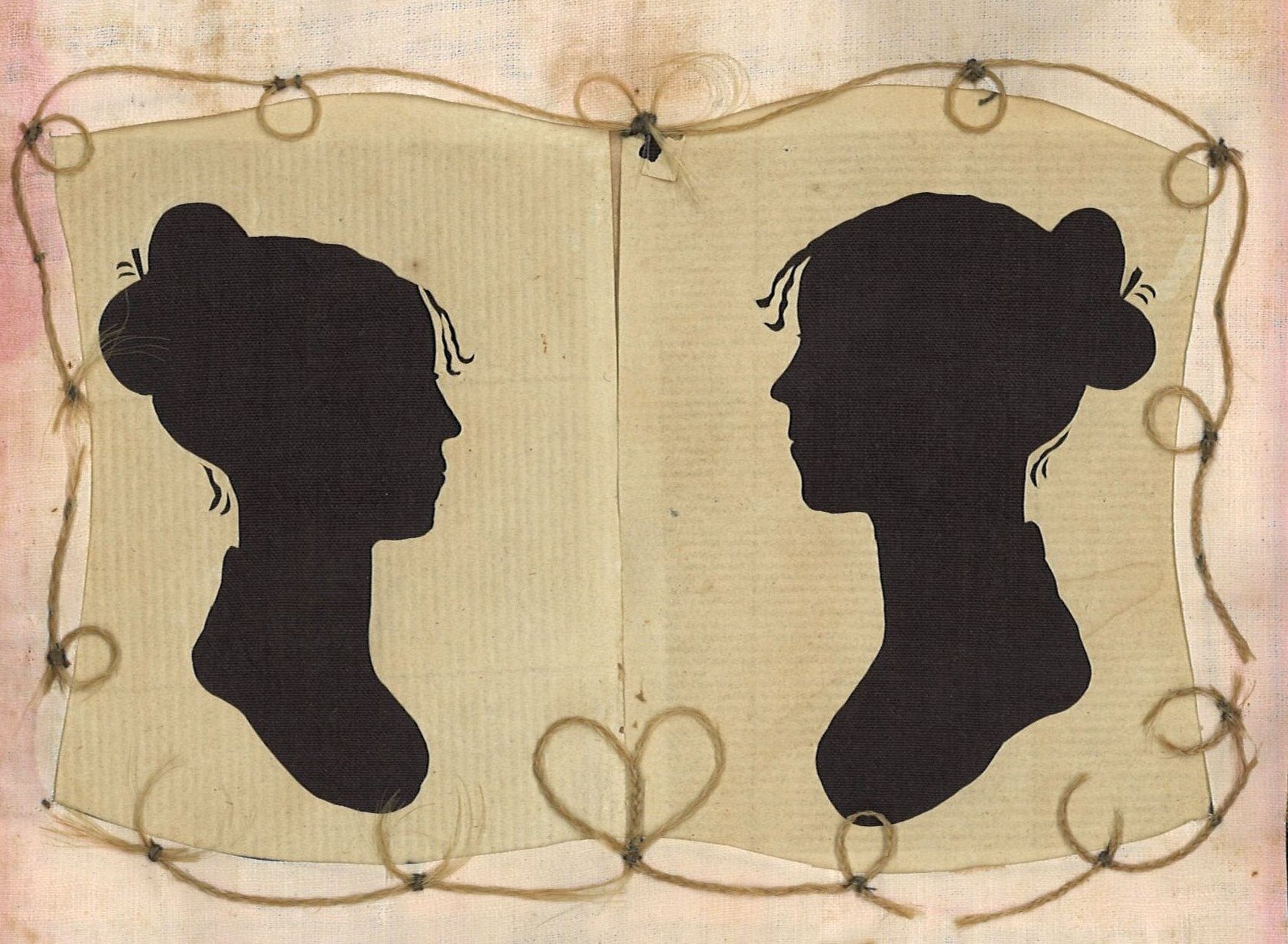
Silhouette Collection
The Stewart-Swift Research Center holds a modest but unique collection of silhouette portraits of early citizens of Addison County. The majority date from the first half of the 19th century but the collection also includes silhouettes by a local early 20th century artist, Susan D. Parker. Among the portraits are those of prominent and accomplished personalities (mostly men) such as doctors, politicians, and academics, whose lives were well documented in local histories and news accounts. Less is known about women represented by the silhouettes. The female subjects are usually only identified by their husband’s name, and their portraits in profile are often the only trace of their life left behind.
Double silhouette of Sylvia Drake and Charity Bryant with braided human hair, 1810-1820.
The Center’s archive houses a unique double silhouette portrait of Sylvia Drake (1784-1868) and Charity Bryant (1777-1851), two women who lived as a married couple for over forty years in nearby Weybridge. The portrait is considered the earliest known image of a same-sex couple in America. The 2014 book by Rachel Hope Cleves, Charity and Sylvia: A Same-Sex Marriage in Early America, is largely based on Drake/Bryant family papers housed at the Center.













Through this silhouette collection, one can catch a glimpse of the lives of past inhabitants of Addison County during its earliest era. The longer one gazes at their profile portraits, the closer one gets to them.
History of Silhouette Making: Up to the end of 18th century, portrait making was reserved for the affluent and powerful. The 19th century brought a significant change in this area by introducing the silhouette portraiture followed by the invention of photography in 1839. The art of silhouette making originated in England, first by painting profiles on ivory and plaster, and then by paper cutting, a quick and inexpensive way of capturing an image of a person. The skill spread throughout Europe and America. Itinerant artists frequently visited Addison County. Their visits are mentioned in local diaries and newspaper advertisements.
Silhouette exhibit at the Sheldon Museum.







